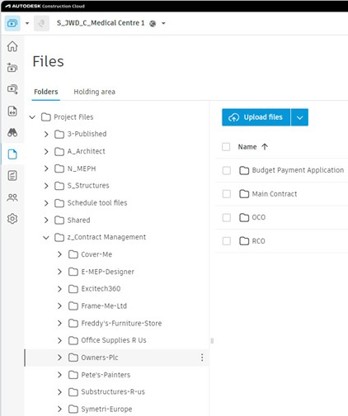Built upon Autodesk Build, a comprehensive construction management platform that brings together all aspects of project management, the Cost Management Module can centralise the management of construction contracts, making it easier for teams to collaborate and track contract details throughout the project lifecycle.
Benefits of Autodesk Cost in Contract Management
Centralised contract repository: One of the key benefits of the Autodesk Cost is the ability to store all contracts in a centralised repository. This ensures that all team members have access to the latest contract documents, eliminating confusion and reducing the risk of using outdated information.

Automated contract tracking: The module allows users to create, track, and manage contracts digitally. Automated tracking features ensure that important contract dates, such as renewal or expiration dates, are not missed. This helps in planning for contract renewals, renegotiations, or terminations well in advance.
Collaboration and communication: Autodesk Build encourages collaboration between project teams, owners, and contractors. The Cost Management Module enables seamless communication by allowing all stakeholders to access and comment on contract documents in real-time. Contractors can raise any queries or concerns directly within the module, facilitating quick resolutions.
Risk management: With Autodesk Cost, construction professionals can easily monitor contract compliance to mitigate risks. The module provides alerts for potential breaches or delays, helping teams to proactively address any issues before they escalate. A comprehensive view of all contracts also enables better risk assessment and decision-making.

Integration with other modules: The Cost Management Module seamlessly integrates with other modules within the Autodesk Build platform, such as schedule management, RFI, and Issue management, through the creation of a PCO (potential changes order). This integration ensures that contract data is synchronised with other project information to monitor risks and their commercial impact, improving reporting and project performance
In conclusion, implementing Autodesk Cost in contract management brings a range of benefits to construction teams. With features such as centralised repository, automated tracking, collaboration, risk management, and integration with other modules, construction professionals can streamline their contract management processes and improve project outcomes. Embracing digital tools like Autodesk Cost not only saves time and resources but also enhances transparency, efficiency, and overall project success.
Stay tuned for the next in the series…
If you would like to understand some of the other notable features of Autodesk Construction Cloud, read some of my other blog posts:






